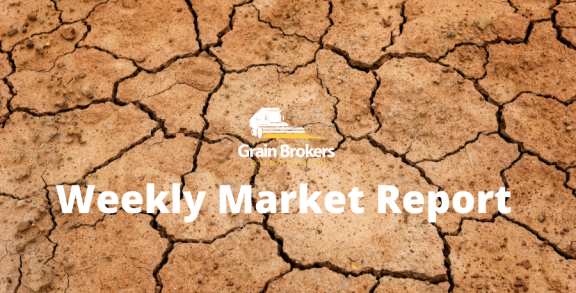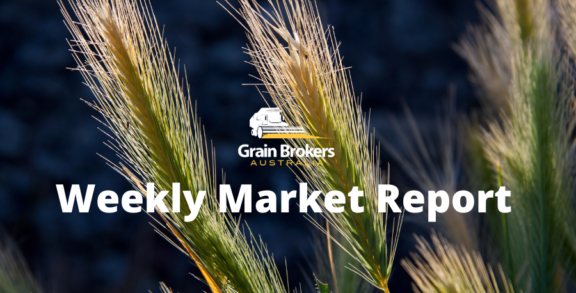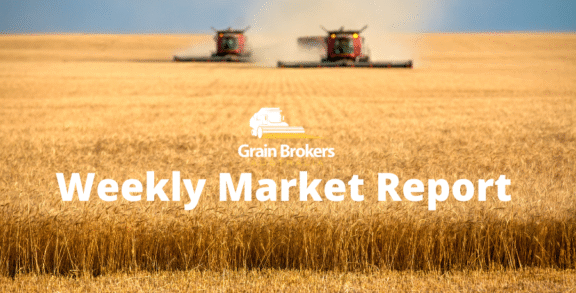
Algerian wheat and barley imports look set to remain at elevated levels in the 2024/25 marketing year with a delayed plant, below average rainfall and poor soil moisture conditions season to date expected to result in production quite similar to last year’s poor harvest.
Algeria was hit hard by drought throughout the 2022/23 growing season (equivalent to the 2023/24 marketing year), which began with seeding of the wheat and barley crops through October, November and December of 2022 and concluded with harvest in May, June and early July last year. The seedbed was dry when the crops were planted, and soil moisture conditions remained well below average through to the cusp of harvest. Rain finally fell in late May and early June leading to devastating localised flooding, some winter crop losses and extensive quality downgrades.
The Algerian Ministry of Agriculture has yet to release any official 2023 harvest data, but a vague press release late last year pegged production at 30 million quintals (3 million metric tonne). Yields as high as 50 to 60 quintals per hectare (5-6 metric tonne per hectare) were recorded in some wilayas (provinces), thanks to the use of supplementary irrigation which boosted output on 13 per cent of the cropped area despite the drought conditions.
The USDA’s Foreign Agricultural Service (FAS) believes that final cereal production from last year’s harvest was even lower at 2.8mmt, off a harvested area of 3.1 million hectares for an average yield of just 0.9mt/ha across both dryland and irrigated crops. This compares to the 2022 harvest when output was 4.1mmt off the same area for an mean yield of 1.32mt/ha. Average wheat and barley production in the five harvests from 2018 to 2022 were 3.44mmt and 1.48mmt, respectively, for a total fractionally less than 5mmt.
The planted hectares and output projections for the current season are unchanged compared to the previous corresponding period, with drought conditions again a major challenge. The wheat and barley areas are estimated at just under 2.1 million hectares and just over 1 million hectares, respectively, with production sitting at 2.7mmt and 1mmt. Despite efforts by the government to increase the area planted to winter crops, the FAS believes that many Algerian farmers plant the maximum area in their holdings but do not seek to expand their farms due to the country’s complicated land ownership structures.
The latest Normalised Difference Vegetation Index (NDVI) imagery indicates that the plant growth is below average in the highlands and the west of the country but close to normal on the Mediterranean coast and eastern wilayas. Overall vegetation conditions look sparse in much of the country’s main grain production areas, with these regions again missing substantive rain this growing season.
More than 90 per cent of winter crop output in Algeria occurs within 300 kilometres of the Mediterranean coastline, and it is broken up into three similar sized regions: western (bordering Morocco), central and eastern (bordering Tunisia). The eastern region is the leading wheat growing area, with 35 per cent of total output. The western region accounts for 31 per cent, the central region 26 per cent and desert areas further south around 8 per cent. Barley is the opposite, with the western area accounting for 40 per cent of total production, the eastern region 31 per cent, 14 per cent in the desert districts and only 12 per cent in the central wilayas.
Algeria is among the world’s largest consumers of wheat and the second-largest wheat market in Africa behind Egypt. The staple grain represents 60 per cent of the food ration in the North African nation of just over 44 million people. Domestic wheat demand is around 11.2mmt with almost all going into flour and bread production. On the other hand, barley is primarily used in stockfeed rations, with a small portion used in bread and couscous for human consumption.
Algeria was quite an active buyer of wheat in January, purchasing at least 350,000 metric tonne of durum wheat early in the month in an international tender for February and March shipment, followed by as much as 900,000mt of milling wheat in a mid-month tender for first half and second half April shipment periods.
Canada was reportedly the dominant origin for the durum wheat, with Mexico and Australia reportedly enjoying a piece of the pie. In the absence of official reporting from Algeria’s state grains agency OAIC, prices were estimated at around US$450/mt cost and freight (C&F) for panamax cargoes and as high as US$470-475/mt for handymax cargoes of Canadian and Australian origin. Algeria is traditionally the largest export destination for Mexican durum wheat and Australia has supplied two cargoes totalling 82,000mt in the past year.
Like durum, the milling wheat tender was optional origin, with French and European Union Black Sea sellers, including Romania and Bulgaria, tipped as the most likely suppliers. Whilst eligible, and despite its exporters expanding aggressively into the Algerian market in the past couple of years, Russian wheat is not expected to be shipped in large volumes against this tender.
The FAS currently expects wheat imports to be a record 8.7mmt in the 2023/24 marketing year, eclipsing the previous high of 8.4mmt set in 2016/17. That is up from 8.1mmt in 2022/23 on the back of lower production, stable domestic demand and strengthening wheat reserve procurement. FAS also expects wheat imports to remain at or near record levels in the 2024/25 marketing year unless there is a major turnaround in this season’s crop outlook over the next few months. Substantial and sustained rainfall would be required to have a significant impact.
Wheat exports to Algeria in the first five months of the 2023/24 marketing year (July to November) put wheat from all origins except Russia at 1.4mmt against 2.6mmt in the previous corresponding period. The EU was the biggest supplier in both periods, but volume has fallen from 2.18mmt in 2022 to 1mmt in 2023. However, Russian export data suggests that the Black Sea exporter supplied 1.3mmt of wheat to Algeria in the July to November 2023 period, up from 0.3mmt a year earlier. That puts the 2023/24 import pace only slightly behind that of 2022/23.
The livestock sector drives Algeria’s barley consumption, and low rainfall typically increases demand due to reduced pasture growth. The barley import estimate for the 2023/24 marketing year currently stands at 700,000mt, up from around 250,000mt a year earlier. It is a case of rinse and repeat in 2024/25 with exports presently expected to be unchanged unless the grassland situation recovers significantly in the boreal spring.
Call your local Grain Brokers Australia representative on 1300 946 544 to discuss your grain marketing needs.





